هل تحول التعريفات العالمية التي تضغط على أرباح أعمال الملابس الداخلية في عام 2025؟
هل تشعر بالقرصة من ارتفاع تكاليف الاستيراد؟ إن التعريفات العالمية ، وخاصة السياسات الأمريكية على البضائع الصينية التي تضيف أكثر من 20 ٪ من التكلفة الإضافية ، تجعل من الصعب الحفاظ على المنافسة.
نعم ، تعريفة 2025 ، وخاصة الواجب المشترك ~ 43.1 ٪ على العديد من السلع الصينية مقابل 15.6 ٪ تقريبًا لبنغلاديش ، تؤثر بشكل مباشر على تكاليف الملابس الداخلية. يمكن أن تقدم استكشاف بدائل مثل تصنيع بنغلاديش ، المدار بشكل صحيح ، حوالي 15-16 ٪ من وفورات في التكاليف وحماية هوامشك.
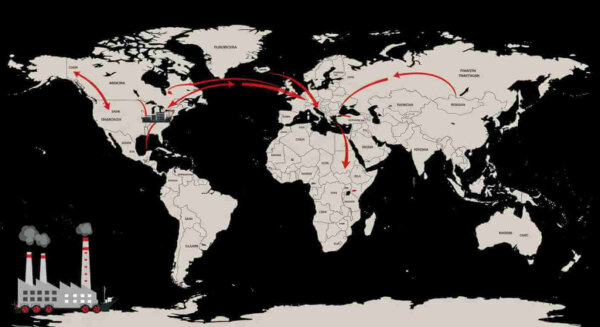
عالم التجارة يشعر باهظة للغاية في الوقت الحالي ، أليس كذلك؟ بصفتي مؤسس وجود ، شركة مصنعة للملابس الداخلية مع أقدام مزروعة بحزم في كل من الصين وبنغلاديش ، رأيت هذه التحولات مباشرة. يكافح العديد من عملائنا الأمريكيين مع هذه التكاليف الجديدة. لا يتعلق الأمر فقط بالأسعار المرتفعة ؛ يتعلق الأمر بإيجاد طرق موثوقة للحفاظ على ازدهار عملك. اسمحوا لي أن أسير لك من خلال ما يحدث وكيف يمكنك التنقل فيه.
كيف هي سياسات التعريفة الجمركية التي تؤثر بشكل مباشر على تكاليف الملابس الداخلية الخاصة بك؟
هل أنت قلق بشأن التعريفات التي لا يمكن التنبؤ بها في الولايات المتحدة التي تصل إلى النتيجة النهائية؟ تستهدف هذه السياسات مباشرة البضائع من الصين ، مما يضيف تكاليف كبيرة (أكثر من 20 ٪ إضافية) إلى وارداتك.
أضافت الولايات المتحدة تعريفة عقابية كبيرة (حوالي 27.5 ٪ على قمة أسعار الأساس) على العديد من السلع الصينية ، بما في ذلك الملابس الداخلية. هذا يدفع الواجبات المشتركة بأكثر من 43 ٪ ، مما يزيد بشكل مباشر من تكاليف الهبوط ويجعل من الصعب التنافس.

يبدو الأمر وكأنه كل بضعة أشهر ، هناك عنوان جديد لسياسة التجارة يسبب عدم اليقين. بالنسبة للشركات التي تستورد الملابس الداخلية ، وخاصة من الصين ، فإن التأثير حقيقي للغاية. القضية الرئيسية التي نراها هي الطبقة الإضافية من التعريفات التي تفرضها حكومة الولايات المتحدة. يسمونها أشياء مختلفة (مثل تعريفة القسم 301) ، ولكن النتيجة هي نفسها: تكاليف أعلى بالنسبة لك.
فهم بنية التعريفة الأمريكية
أضاف نهج حكومة الولايات المتحدة ضغطًا كبيرًا. لقد قاموا بتنفيذ هذه التعريفات الإضافية ، وغالبًا ما يكون حوالي 27.5 ٪ ، ويستهدفون على وجه التحديد المنتجات الصينية. عند إضافتها إلى التعريفة الأساسية (حوالي 15.6 ٪) ، يتجاوز إجمالي الرسوم 43 ٪ للعديد من عناصر الملابس الداخلية. بالنسبة للسلع كثيفة العمالة مثل الملابس الداخلية ، حيث تكون نقاط الأسعار ضيقة في كثير من الأحيان ، فإن هذه التكلفة الإضافية تحدث فرقًا كبيرًا. إنها ليست مجرد زيادة صغيرة. إنه يغير بشكل أساسي حساب التكلفة التي تعتمد عليها العديد من الشركات لسنوات. لقد رأينا هذا يؤثر على العديد من شركائنا الذين حصلوا على مصادر حصريًا من الصين. فجأة ، قفزت تكاليفهم التي تعرضت للهبوط ، مما أجبرهم على إعادة التفكير في استراتيجية المصادر بأكملها.
هل مناطق أخرى مثل جنوب شرق آسيا معرضة للخطر أيضًا؟
هناك أيضًا حديث عن الولايات المتحدة التي تنظر عن كثب إلى بلدان أخرى ، مثل فيتنام. نظرًا لأن فيتنام لديها فائض تجاري كبير مع الولايات المتحدة ، يتوقع بعض المحللين أنهم قد يواجهون التعريفات أيضًا ، وربما يضربون المنسوجات. في حين أن بنغلاديش لم يتم استهدافها بشكل صريح بنفس الطريقة للتعريفات العريضة حتى الآنالاعتماد فقط على أي يحمل بلد واحد خارج الصين مجموعة من المخاطر الخاصة به. يسلط عدم اليقين هذا الضوء على سبب وجود خيارات إنتاج مرنة ، مثل إعدادنا المزدوج في الصين و [الرابط إلى صفحة OPS الخاصة بـ Bangladesh] Bangladesh ، ذات قيمة كبيرة. إنها تتيح لنا المحور بناءً على رياح التجارة المتغيرة.
كيف تستجيب الصين وماذا تعني الاتفاقيات الإقليمية بالنسبة لك؟
رؤية الصين تعدل سياساتها التجارية؟ إنهم ينفتحون في بعض المناطق بينما تقوم الاتفاقات الإقليمية مثل RCEP بتغيير التدفقات التجارية داخل آسيا.
تقدم الصين تعريفة صفرية لأقل دول تطوّر مثل بنغلاديش ، ودعم نمو النسيج. اتفاقيات مثل RCEP تقلل من التعريفة الجمركية الإقليمية ، مما يجعل سلاسل التوريد في جنوب شرق آسيا قد تكون أكثر تكاملاً ولكنها معقدة أيضًا.
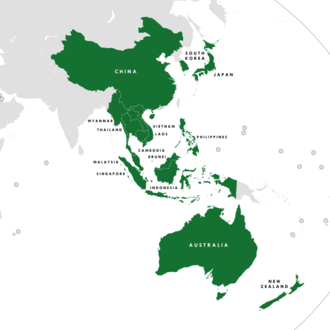
الأمر ليس فقط عن سياساتنا ؛ تقوم الصين وبقية آسيا أيضًا بحركات تؤثر على سلسلة التوريد الخاصة بك. الصين ، على سبيل المثال ، حاولت دعم التنمية في بلدان أخرى. قاموا بتنفيذ تعريفة صفرية على جميع البضائع تقريبًا من أقل البلدان المتقدمة (LDCs) ، والتي تشمل بنغلاديش. وقد ساعد هذا بالتأكيد بنغلاديش على تنمية قطاع النسيج.
سياسة التعريفة الصينية الصينية ل LDCs
This policy has been a significant boost for countries like Bangladesh. It means raw materials or components sourced from China for production in Bangladesh might face lower duties, contributing to overall cost management. However, there's a catch. Bangladesh is expected to "graduate" من حالة LDC حوالي عام 2026. في حين أن التأثير الفوري على التفضيلات التجارية (مثل نظام الأفضليات المعمم في الاتحاد الأوروبي ، الذي تمت مناقشته لاحقًا) قد يستغرق وقتًا أطول ، إلا أنه شيء نراقبه عن كثب. يحتاج التخطيط إلى حساب هذه التحولات المستقبلية المحتملة.
اتفاقيات التجارة الإقليمية (RCEP ، ASEAN FTA)
في الوقت نفسه ، تقلل اتفاقيات مثل الشراكة الاقتصادية الشاملة الإقليمية (RCEP) داخل آسيا. هذا يجعل من الأسهل وربما أرخص نقل المكونات أو المواد بين دول مثل الصين وفيتنام وكمبوديا. إنه يشجع أكثر سلاسل التوريد الإقليمية المتكاملة. في حين أن هذا يوفر الفرص ، فهذا يعني أيضًا أن المناظر الطبيعية تتحول باستمرار. الاعتماد على شريك يفهم هذه التدفقات الإقليمية هو المفتاح. لوجودنا ، يتيح لنا وجودنا في الصين وبنغلاديش التنقل في هذه الديناميات الإقليمية بفعالية. يمكننا مصدر المواد على النحو الأمثل داخل المنطقة بناءً على هذه الاتفاقيات.
ماذا يعني هذا للملابس الداخلية على وجه التحديد؟
الشعور بالضغط لتحويل الإنتاج بسبب التكاليف والتعريفات؟ تشهد صناعة الملابس الداخلية تغييرات كبيرة ، حيث ينشأ الإنتاج وقواعد الامتثال الجديدة.
ارتفاع التكاليف في الصين بالإضافة إلى التعريفات الأمريكية تدفع العلامات التجارية إلى أماكن مثل فيتنام وبنغلاديش. توفر بنغلاديش تكاليف العمالة المنخفضة (0.7-10 دولار/ساعة مقابل 3-4-4/ساعة من الصين) ومزايا التعريفة الجمركية للسوق الأمريكي ، على الرغم من أن قواعد ESG في الاتحاد الأوروبي تضيف ضغوطًا جديدة.
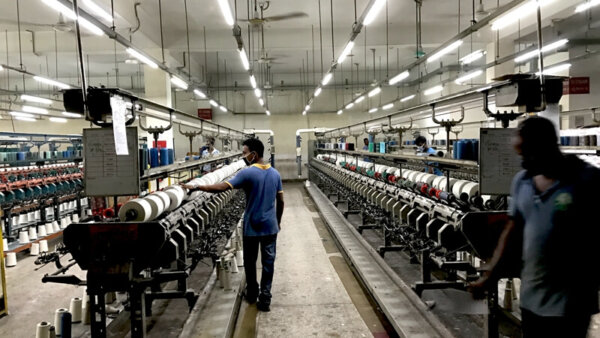
هذه التحولات التعريفية ذات الصور الكبيرة لها تأثيرات محددة للغاية على تحديد الملابس الداخلية والملابس الداخلية. ترتفع التكاليف في مراكز التصنيع التقليدية مثل الصين ، ليس فقط بسبب التعريفة الجمركية ولكن أيضًا ارتفاع تكاليف العمالة (حوالي 3-4 دولارات في الساعة). هذا يجبر العلامات التجارية مثل لك للبحث عن بدائل. أصبحت فيتنام خيارًا شائعًا ، حيث رأت نموًا كبيرًا في التصدير. ولكن كما ذكرنا ، قد تواجه مخاطر التعريفة الخاصة بها.
التحول إلى جنوب شرق آسيا: فيتنام مقابل بنغلاديش
انتقلت العديد من الشركات إلى فيتنام ، التي تجذبها انخفاض تكاليف العمالة مقارنة بالصين. ومع ذلك ، تقدم بنغلاديش مجموعة مختلفة من المزايا. تكاليف العمالة أقل (حوالي 0.7-1 دولار في الساعة) ، وبشكل حاسم بالنسبة للسوق الأمريكي ، تجنب المنتجات التي يتم شحنها من بنغلاديش التعريفة الحادة في القسم 301 المطبقة على البضائع الصينية. حتى بالنظر إلى أوقات زمنية أطول وتكاليف شحن أعلى محتملة ، فإن إجمالي وفورات التكلفة التي هبطت عادة حوالي 15-16 ٪. بالنسبة للأسواق الأوروبية ، تستفيد بنغلاديش أيضًا من نظام التفضيلات المعمم في الاتحاد الأوروبي (GSP) في الوقت الحالي ، مما يتيح الوصول إلى خالية من الرسوم. ولكن هناك تحديًا محتملًا في المستقبل: قد تفقد بنغلاديش حالة LDC قريبًا ، مما قد يؤثر على فوائد GSP في الاتحاد الأوروبي أسفل الخط ، وربما حوالي عام 2029. وهذا يجعل التخطيط طويل الأجل ضروريًا.
صعود الامتثال ESG
هناك عامل ضخم آخر ، خاصة بالنسبة للسوق الأوروبي ، وهو الامتثال ESG (البيئي والاجتماعي والاجتماعي). يدفع الاتحاد الأوروبي بقوة من أجل الاستدامة ، ويتطلب أشياء مثل استخدام نسبة مئوية معينة من المواد المستدامة في المنسوجات. هذا يضيف التعقيد والتكلفة ، حيث يحتاج المصنعون إلى الاستثمار في مواد وعمليات متوافقة. تعمل الصين أيضًا على تعزيز المواد المستدامة. في امتلاكنا ، قمنا بدمج اعتبارات ESG في كل من الصين لدينا و [الارتباط بصفحة الاستدامة] في بنغلاديش ، مع التأكد من استوفى هذه المعايير المتطورة.
كيف يمكنك تكييف استراتيجيتك دون التضحية بالجودة؟
هل تحتاج إلى خفض التكاليف ولكن قلقًا بشأن الحفاظ على الجودة إذا قمت بتبديل الموردين؟ يتطلب التكيف المرونة ، وفحص مورد دقيق ، وموازنة التكلفة مع الجودة.
بناء المرونة من خلال العمل مع الموردين الذين لديهم خيارات متعددة المنطقة (مثل الصين + بنغلاديش). VET الموردين بدقة لأنظمة الاستقرار والجودة. لا تطارد أقل سعر ؛ ضمان الجودة من خلال المراقبة المتسقة.
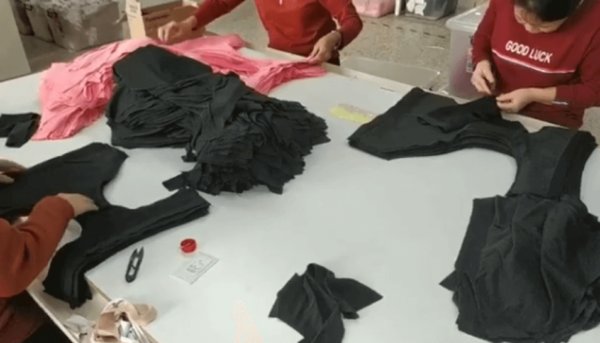
حسنًا ، لذا فإن المشهد معقد ويتغير. كيف تتعامل مع هذا ، بصفتك موزعًا داخليًا أو علامة تجارية مع هذا؟ يتعلق الأمر بأن تكون ذكيًا ومرنًا. مطاردة أقل تكلفة مطلقة دون النظر في الصورة الأكبر يمكن أن تأتي بنتائج عكسية. يعد تناسق الجودة أمرًا بالغ الأهمية لسمعة علامتك التجارية.
بناء مرونة سلسلة التوريد
The key is flexibility. You need the ability to adjust sourcing based on tariff changes or other disruptions. The best way I've found to achieve this is by partnering with suppliers who have production capabilities in multiple strategic locations. For example, our HAVING model, with established factories in both Shantou, China, and Bangladesh, gives our clients exactly this flexibility. If tariffs spike for China, we can shift relevant production to Bangladesh. If new risks emerge for Bangladesh, we have the stable, experienced base in China to rely on. This dual capability acts as a built-in shock absorber, providing unmatched supply chain security in volatile times.
اختيار الموردين الموثوقين
الأمر ليس فقط عن الموقع ؛ إنه يتعلق بالمورد نفسه. أنت بحاجة إلى شركاء مستقرون مالياً ولديهم أنظمة إنتاج قوية. هل يمكنهم التعامل مع تقلب أسعار المواد الخام أو الأحداث غير المتوقعة دون تعطيل العرض الخاص بك؟ هل أثبتوا أنظمة مراقبة الجودة؟ قمنا بتنفيذ تدابير مراقبة الجودة المتطابقة ، والتدريب عبر القابلية ، وأنظمة الإدارة الموحدة في كل من مرافقنا الصينية وبنغلاديش لضمان الاتساق الثابت. اطرح على الموردين المحتملين أسئلة صعبة حول استقرارهم وسعةهم ومعدلات العيوب وسجل حافل الجودة. احصل على المراجع!
موازنة التكلفة والجودة
من المغري التركيز فقط على وفورات التكاليف 15-16 ٪ من تجنب التعريفة الجمركية. لكن التضحية بالجودة سوف يضر علامتك التجارية. إن العثور على تلك البقعة الحلوة بين السعر التنافسي والجودة التي يتوقعها عملاؤك أمر حيوي. بينما تقدم بنغلاديش مزايا تكلفة ، تأكد من الحفاظ على شريكك هناك معايير عالية ، مماثلة لما تتوقعه من الصين للمنتجات القياسية. وهذا يتطلب مراقبة جودة صارمة ومستمرة وتواصل واضح. لهذا السبب يدير فريقنا الصيني ذو الخبرة بنشاط ويشرف على الجودة في منشأة بنغلاديش لدينا ، مما يضمن لك الحصول على أفضل ما في العالمين.
ما هي المخاطر الحقيقية وكيف يمكنك إدارتها؟
قلق بشأن عدم الاستقرار السياسي أو مخاطر الجودة أو التأخيرات اللوجستية عند تحديد مصادر من مناطق جديدة؟ يعد فهم وتخطيط مخاطر مثل هذه أمرًا بالغ الأهمية للعمليات السلسة.
تشمل المخاطر الرئيسية عدم الاستقرار السياسي/العملي ، وحدود البنية التحتية (السلطة) ، وتغييرات السياسة المحتملة (التعريفات ، وحالة LDC) ، والتأخيرات اللوجستية. إدارة المخاطر عبر مصادر متعددة المواقع (مثل نموذج الصين/BD) ، وفحص مورد قوي ، وتخطيط الطوارئ ، ومخزون السلامة.
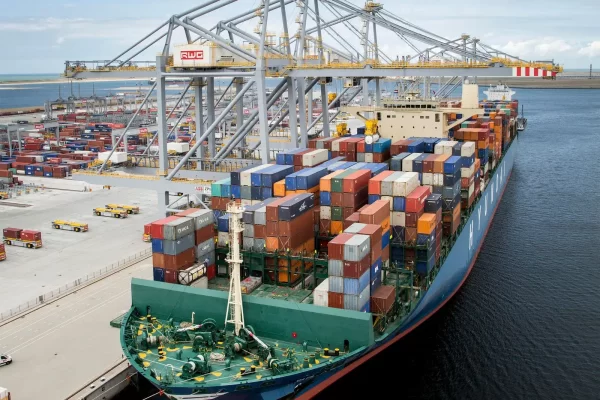
لنكن صادقين ، ويتضمن تغيير الإنتاج ، وخاصة إلى البلدان النامية ، مخاطر. تجاهلهم يطلب المتاعب. استنادًا إلى تجربتنا في إنشاء وتشغيل منشأة بنغلاديش على مدار السنوات الخمس الماضية ، تعلمنا كيفية إدارة هذه الأمور بفعالية ، وضمان الاستمرارية لعملائنا حتى خلال الأوقات الصعبة مثل مظاهرات العمل 2023 هناك.
تحديد المخاطر المحتملة
هناك عدة عوامل تحتاج إلى دراسة متأنية عند النظر إلى بنغلاديش. يمكن أن يتقلب الاستقرار السياسي ، وخاصة حول الانتخابات ، ويمكن أن تحدث اضطرابات العمل في بعض الأحيان. يمكن أن تشكل البنية التحتية ، على الرغم من التحسن ، تحديات مثل موثوقية الطاقة (على الرغم من أن منشأتنا في حديقة حديثة مع توليد احتياطية). ناقشنا أيضًا التغييرات المحتملة على المدى الطويل في حالة التجارة (مثل تخرج بنغلاديش من حالة LDC) والإمكانية الدائمة للتعريفات الجديدة على مستوى العالم. يمكن أن تكون الخدمات اللوجستية أيضًا أبطأ أو أقل مباشرة مقارنة بالصين (عادة ما 45-60 يومًا من الوقت في الموعد النهائي مقابل 30-45 يومًا من الصين) ، مما يتطلب آفاقًا أطول للتخطيط.
استراتيجيات التخفيف التي تعمل
لذا ، كيف نتعامل مع هذا في وجود عملائنا؟
- ميزة التسهيلات المزدوجة: هذا هو أكبر مخفف لدينا المخاطر. إذا ضربت المشكلات الرئيسية موقعًا واحدًا ، فيمكننا تحويل الإنتاج إلى الآخر. وهذا يوفر أمن سلسلة التوريد لا مثيل له.
- الموقع الاستراتيجي & امتثال: مصنعنا في بنغلاديش في حديقة صناعية حديثة مع أنظمة البنية التحتية والسلامة الجيدة. نحافظ على شهادات رئيسية (مثل ISO 9001 ، SA8000 ، WRAP ، BSCI) ضمان الممارسات الأخلاقية والآمنة.
- مصادر المواد: لدينا موردي النسخ الاحتياطية وأحيانًا نستفيد من سلسلة التوريد في الصين للمواد الحرجة إذا لزم الأمر ، مما يضمن توفر المواد.
- التخطيط اللوجستي: نحن نعمل مع شركاء شحن متعددين ونخطط لوجستيات بعناية ، وبناء في المخازن المؤقتة لتقليل التأخير.
- جرد & النهج التدريجي: بالنسبة للعملاء الذين ينتقلون ، فإننا نوصي غالبًا بنهج مرحل ، بدءًا من منتجات أبسط ، وربما تعديل مستويات أسهم السلامة في البداية لحساب أوقات زائدة أطول.
لا يوجد موقع خالٍ من المخاطر ، ولكن مع التخطيط الاستباقي والمرونة المدمجة مثلنا ، يمكن التحكم في هذه المخاطر. تُظهر تجربتنا أن بنغلاديش يمكن أن تكون فعالة من حيث التكلفة وموثوقة عند إدارتها بشكل صحيح.
ما هي أذكى طريقة لاستكشاف إنتاج بنغلاديش؟
هل أنت مستعد لاستكشاف البدائل ولكن غير متأكد من أين تبدأ؟ يمكن أن يؤدي القفز بدون خطة إلى مشاكل. يعد النهج الدقيق خطوة بخطوة هو الأفضل للنجاح.
ابدأ بمشروع تجريبي للعناصر الأكثر بساطة وحجم كبير. تقييم الشركاء المحتملين بدقة (الشهادات ، الزيارات ، المراجع). اختبار جودة عبر العينات قبل وضع طلب تجريبي صغير (3K-5K PCS) للتحقق من صحة العملية بأكملها.

إن نقل الإنتاج يبدو وكأنه خطوة كبيرة ، لكن لا يجب أن يكون ساحقًا. بناءً على توجيه العديد من العملاء من خلال هذا الانتقال ، أوصي بشدة بنهج منظم وحذر. لا تحاول تحريك كل شيء دفعة واحدة. هذا يقلل من المخاطر ويسمح لك ببناء الثقة.
نهج المشروع التجريبي
أفضل طريقة للبدء هي مع أ مشروع تجريبي. اختر واحدًا أو اثنتين من المنتجات الأكثر بساطة وحجمك-ربما سراويل أو ملخصات من القطن الأساسية ، وهي عناصر تتفوق فيها بنغلاديش. عادة ما تكون هذه هي الأسهل في نقلها وتسمح لك برؤية وفورات التكلفة المحتملة التي تم هبوطها بشكل مباشر. يتيح لك ذلك اختبار المياه ذات المخاطر المنخفضة قبل ارتكاب أنماط أكثر تعقيدًا.
تقييم الشركاء المحتملين
العثور على يمين الشريك أمر بالغ الأهمية. لا تنظر فقط إلى السعر.
- الشهادات تحقق: ابحث عن معايير معترف بها دوليًا مثل ISO 9001 (الجودة) ، SA8000/WRAP/BSCI (الامتثال الاجتماعي). هذه تظهر التزاما بالتميز التشغيلي والممارسات الأخلاقية.
- زيارة (أو جولة افتراضية): إن رؤية المنشأة والعمليات وظروف العمل تمنحك رؤية لا تقدر بثمن لقدراتهم وأنظمة الإدارة. انتبه إلى عمليات مراقبة الجودة والتنظيم.
- اطلب المراجع: تحدث إلى العملاء الحاليين ، وخاصة أولئك الذين لديهم منتجات مماثلة. الحصول على ملاحظاتهم الصادقة على التواصل وحل المشكلات والموثوقية.
عملية أمر المحاكمة
بمجرد اختيار شريك:
- أخذ العينات: ابدأ بعينات التطوير بناءً على عبوات التقنية الخاصة بك. تأكد من تلبية معايير الجودة الخاصة بك قبل المتابعة. هذا يختبر تنفيذهم الفني.
- أمر التجربة: ضع أمرًا محدودًا تجريبيًا ، عادةً ما يتراوح بين 3000 و 5000 قطعة. هذا يختبر كامل عملية الإنتاج - المصادر ، التصنيع ، مراقبة الجودة ، التعبئة ، الشحن - على نطاق يمكن التحكم فيه.
- تقييم الأداء: بعد التجربة ، قم بتقييم كل شيء - جودة المنتج النهائي ، وموثوقية التسليم ، واستجابة الاتصال ، والتحقق من وفورات التكاليف الفعلية. استخدم هذا لاتخاذ قرار بشأن زيادة حجم الإنتاج أو إضافة المزيد من فئات المنتجات.
At HAVING, we guide clients through this exact process, using our structured system and experienced teams in both China and Bangladesh to make the transition smooth and successful. Our six-step process ensures transparency and minimizes disruption.
خاتمة
تعيد التعريفات والتكاليف العالمية إعادة تشكيل مصادر الملابس الداخلية. يتطلب التكيف المرونة ، والشركاء الموثوق بهم مثل وجود وفورات في التكاليف ، وموازنة الجودة للتنقل في هذا المشهد الجديد بنجاح.
دوري
HAVING(China)Ltd is one leading fashion lingerie manufacturer, founded in South of China, Shantou City, Guangdong Province,our annual sale is 30 million USD per year by supplying over 3000 stores.
لقد سعى مصنعنا باستمرار لإنشاء منتجات تتبع فلسفة الجسم قبل الجسد ، مع التركيز على قدم المساواة على الراحة والجماليات والجودة.
بعد تطوير عرض انتقائي للمنتجات المصنوعة حسب الطلب ، بما في ذلك خطوط واسعة من الملابس الداخلية للرجال والملابس الحميمة للنساء ، مثل حمالات الصدر والسراويل الداخلية والملابس الأصلية وملابس السباحة.
